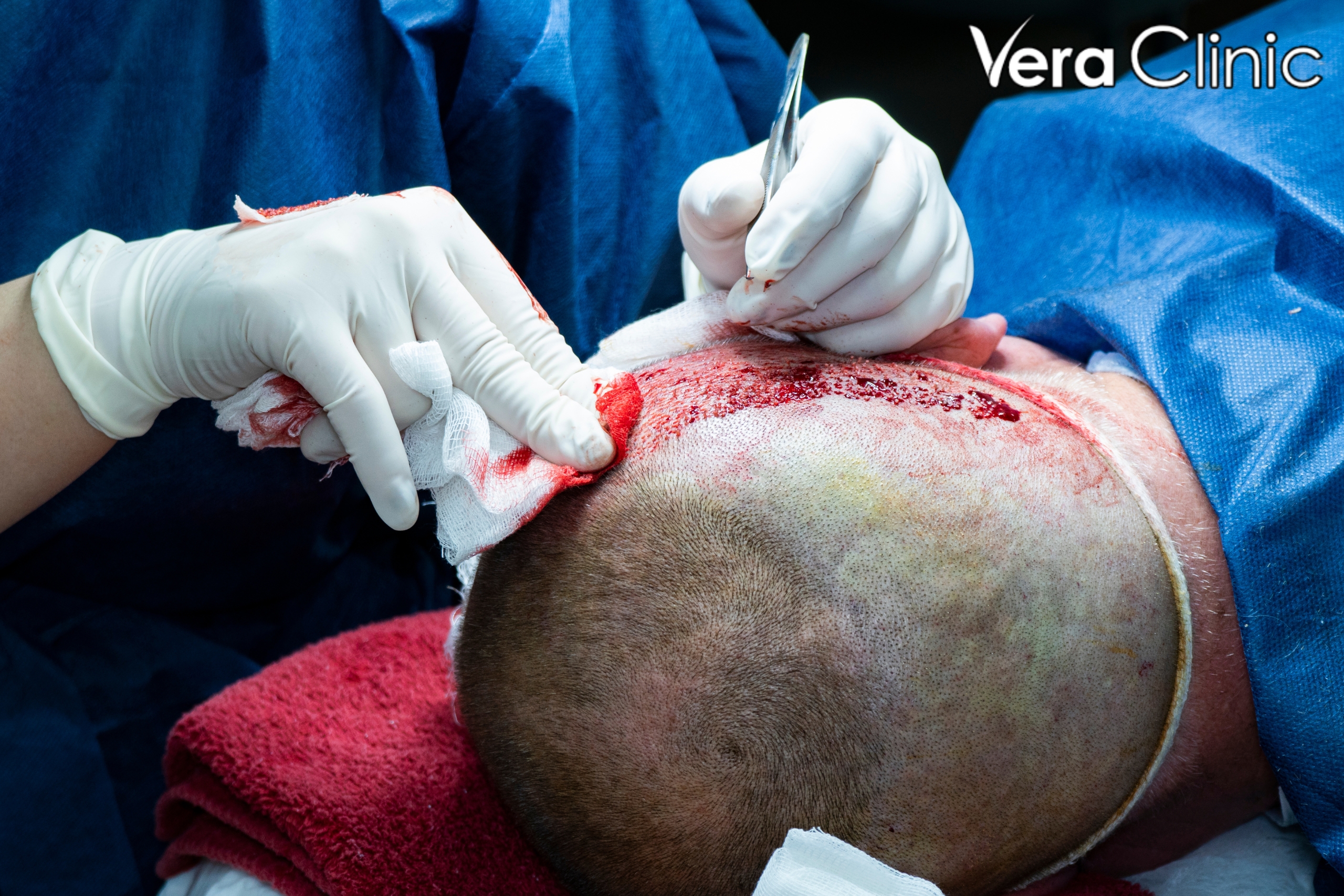Are you struggling with hair loss and considering a hair transplant procedure? Look no further than Turkey, the go-to destination for the best hair transplant techniques. With its affordable prices, state-of-the-art facilities, and highly skilled surgeons, Turkey has quickly become a global leader in hair transplantation.
Hair transplant procedures in Turkey offer a range of techniques to help you regain a fuller, more natural-looking head of hair. The two most popular techniques are follicular unit extraction (FUE) and direct hair implantation (DHI). Both methods involve extracting hair follicles from a donor area and implanting them into the recipient area. FUE involves individually extracting follicles with a specialized instrument, while DHI utilizes a Choi implanter pen for a more precise and efficient process.
Choosing the best technique for your hair transplant is crucial for achieving successful and long-lasting results. The expertise and experience of the surgeon also play a significant role in determining the outcome. Therefore, it is essential to research and select a reputable clinic that employs skilled and knowledgeable professionals.
With the growing demand for hair transplants, many clinics in Turkey claim to offer the “best hair transplant in turkey.” However, not all clinics are equal, and making an informed decision is vital to ensure a positive experience and satisfactory results. By thoroughly researching the techniques, facilities, and success rates of various clinics, you can find the best option for your specific needs.
Embark on your hair restoration journey in Turkey, and you can enjoy not only a successful hair transplant but also the opportunity to explore this beautiful country. From its stunning landscapes to its rich cultural heritage, Turkey offers a perfect blend of medical excellence and a memorable travel experience.
Overview of Hair Transplant Techniques
Hair transplant techniques have revolutionized the field of cosmetic surgery, offering individuals an effective solution to hair loss and baldness. Over the years, various techniques have been developed, each with its own set of advantages and limitations.
Traditional FUT Method
Follicular Unit Transplantation (FUT) is a surgical hair restoration technique that involves removing donor hair follicles from the back or sides of the head and transplanting them to areas experiencing hair loss. This procedure is commonly used to treat androgenetic alopecia or male pattern baldness.
The traditional FUT method involves the removal of a linear strip of scalp containing hair follicles from the donor area. The size of the strip can vary depending on the patient’s needs. The strip is then dissected under a microscope into individual hair grafts, which are then transplanted into tiny incisions made in the recipient area. Suturing the donor area after removing the strip is also necessary.
One of the primary advantages of the traditional FUT method is that it allows for the extraction of a larger number of grafts in a single session compared to other hair restoration techniques. This can be particularly beneficial for patients with extensive hair loss or those who desire maximum hair coverage.
However, there are also some drawbacks to the traditional FUT method. The most notable disadvantage is the linear scar left in the donor area due to the strip extraction. Although skilled surgeons can minimize the scar’s visibility, it may still be noticeable if the patient prefers shorter hairstyles. This scarring can also limit the patient’s options for future hair restoration procedures.
Furthermore, the FUT method requires sutures in the donor area, which can lead to discomfort and a longer healing time compared to other hair transplant techniques such as Follicular Unit Extraction (FUE).
Advanced FUE Technique
The Advanced Follicular Unit Extraction (FUE) technique is a highly advanced and minimally invasive hair transplantation method that has revolutionized the field of hair restoration. It involves the extraction of individual hair follicles from the donor area of the scalp and their transplantation into the recipient area. Unlike traditional hair transplant methods, which involve the removal of a strip of scalp, the FUE technique does not leave any linear scars, resulting in a more natural-looking hairline.
There are several benefits of the advanced FUE technique compared to traditional methods. Firstly, the procedure is less painful and requires minimal downtime. Since there is no need for stitches or sutures, patients can resume their normal activities within a few days after the surgery. Additionally, the FUE technique allows for precise extraction and transplantation of individual hair follicles, resulting in a more natural hairline and overall aesthetic appearance. The procedure also provides the flexibility to target specific areas for hair restoration, such as the eyebrows or beard.
Furthermore, the FUE technique is suitable for patients with limited donor hair, as it allows for the extraction of hair follicles from various body areas. This is particularly beneficial for individuals who have undergone previous hair transplant surgeries or have scarred donor areas. The FUE technique also reduces the risk of complications, such as infection or discomfort associated with wound healing, which are more commonly associated with traditional methods.
Sapphire FUE Method
The Sapphire FUE (Follicular Unit Extraction) method is a cutting-edge technology that has revolutionized the field of hair transplantation. This advanced technique involves using sapphire blades instead of traditional steel blades for extracting hair follicles from the donor area and implanting them in the recipient area.
There are several advantages of using sapphire blades for hair transplantation. Firstly, the sapphire blades are incredibly sharp, which makes it easier to create small, precise incisions for extracting individual hair follicles. This results in minimal trauma to the scalp and faster healing time for the patient.
Moreover, the use of sapphire blades allows for a higher density of transplanted hair follicles. The sharpness of the blades enables the surgeon to make smaller incisions, which means they can fit more grafts in a given area. This leads to a denser and more natural-looking result, giving patients full and thick hair.
Furthermore, sapphire blades have exceptional biocompatibility with human tissue. This means that the risk of infections, scarring, and other complications associated with traditional steel blades is significantly reduced. The sapphire material is also resistant to corrosion, ensuring a sterile and safe surgical environment.
Factors to Consider When Choosing a Technique
When choosing a technique for hair transplantation, there are several factors that should be considered.
First, it is important to research the success rates of different techniques. This can help determine the effectiveness and reliability of each option. Factors such as scarring, recovery time, and natural-looking results should also be taken into consideration. Scarring can be a concern for many individuals, so opting for a technique that minimizes scarring can be important. Similarly, recovery time and natural-looking results are crucial to achieving overall satisfaction with the procedure.
Additionally, the experience of the surgeon should be given emphasis. Choosing a surgeon who has experience in the chosen technique can increase the likelihood of a successful outcome. It is important to research the surgeon’s qualifications and track record to ensure that they have the necessary skills and expertise to perform the procedure effectively.
Cost is another factor to consider when choosing a technique. Traditional FUT, advanced FUE, and Sapphire FUE techniques may differ in cost. It is important to weigh the cost differences against the desired outcome and the importance of each factor, such as scarring and recovery time.
Lastly, patient satisfaction is an important consideration. It is advisable to read patient testimonials and reviews to get a better understanding of the experience and results of others who have undergone the chosen technique. This can provide valuable insights and help in making an informed decision.

Conclusion
Choosing the best hair transplant in Turkey is crucial for achieving successful and natural-looking results. While traditional FUT method has been used for many years, advanced FUE technique and Sapphire FUE method are gaining popularity for their benefits such as minimal scarring, faster recovery time, and higher success rates.
Factors to consider when choosing a technique include the success rate, experience of the surgeon, cost differences, and patient satisfaction. It is important to research and consult with a qualified surgeon to determine the best technique for your individual needs and goals. By considering these factors, you can ensure a successful hair transplant procedure in Turkey that will leave you feeling confident and satisfied with your results.

